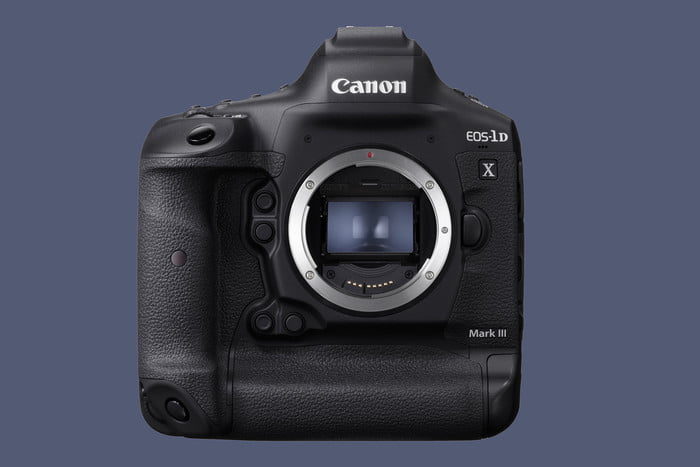
Canon revealed details of the previously announced EOS-1D X Mark III at CES 2020. The professional DSLR brings a wealth of new technology and blurs the line between still and video camera, with features that will appeal to both professional photographers and filmmakers. The flagship camera will ship in February at a price of $6,500.
The EOS-1D X has long been a favorite camera among sports photographers for its blazing speed and full-frame image quality. The Mark III expands on the Mark II’s already impressive performance, shooting 20-megapixel images at 16 frames per second while using the optical viewfinder, or a Sony A9-tying 20fps when in live view.
Continuous shooting is aided by an entirely new autofocus sensor with a 191-point autofocus system that can now track faces. In live view, eye tracking is also available thanks to the revamped Dual Pixel Autofocus, which has more than 3,000 selectable points on the 1D X Mark III.
The image buffer has also been extended, allowing photographers to keep the shutter clicking away for 1,000 exposures in RAW+JPEG. To handle such high bandwidth requirements, Canon has finally ditched CFast and CompactFlash and bestowed the Mark III with two CFexpress card slots. Current CFexpress cards are capable of writing data at over 1,400 megabytes per second.
Low-light performance has also seen a boost, thanks to the new Digic X image processor. The native ISO range spans 100 to 102,400, but it can be expanded all the way up to 819,200. The live-view autofocus is also sensitive down to a see-in-the-dark -6 EV, so football photographers covering the Super Bowl should be able to continue shooting even if there’s another blackout.
But it isn’t just the sports photography crowd who will be pleased with Canon’s latest. The 1D X Mark III has the best video specs ever put into a DSLR, with 12-bit RAW recording at 5.5K resolution or lightly compressed 10-bit 4:2:2 4K at up to 60 fps. It can also stream 4K/60p video over its HDMI port for external monitoring and recording. This is the first DSLR that can truly call itself a hybrid at the professional level.
The 1D X Mark III looks to be a very impressive machine, which is exactly what Canon needed to deliver as the DSLR continues to lose ground to the mirrorless camera. The camera is available for pre-order now.
Follow our live blog for more CES news and announcements.



